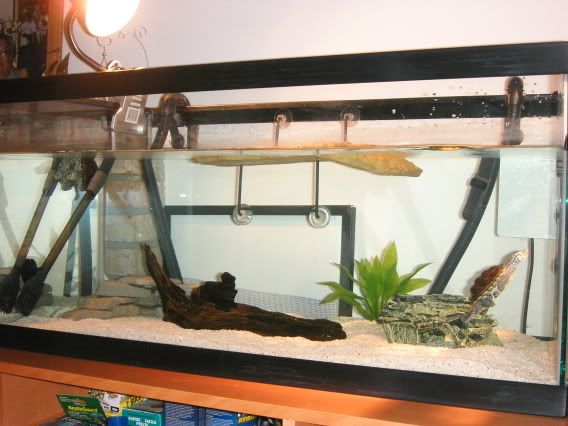Hi Im new to the forum and new to the brackish tank however i keep diamondback terrapins.
So far this is my setup:
40 Gallon Long
Fluval 405
100 Watt Submersible Heater
SG is 1.008-1.010
Temperature is 78-80
Basking Area is 85-90
Substrate is Crushed Coral
I have some driftwood inside as well (is this ok to have in brackish environment)
Now I have a few questions. I want to put some fish/shrimp/crab/lobster but i do not know what is safe to put in the brackish environment that is safe for my turtles to eat. I know i can put in mollies but Im not sure about anything else. I want to put some crustaceans in there and possibly some snails but im not sure which ones are safe for the brackish water environment.
Thank You I will post up some pics in a little bit when I take the pictures.
So far this is my setup:
40 Gallon Long
Fluval 405
100 Watt Submersible Heater
SG is 1.008-1.010
Temperature is 78-80
Basking Area is 85-90
Substrate is Crushed Coral
I have some driftwood inside as well (is this ok to have in brackish environment)
Now I have a few questions. I want to put some fish/shrimp/crab/lobster but i do not know what is safe to put in the brackish environment that is safe for my turtles to eat. I know i can put in mollies but Im not sure about anything else. I want to put some crustaceans in there and possibly some snails but im not sure which ones are safe for the brackish water environment.
Thank You I will post up some pics in a little bit when I take the pictures.



